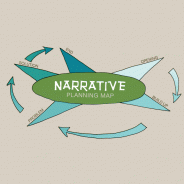The Script – Digital Storytelling Tutorial
When you begin to create the script you can start by developing a narrative that you can play out in your head. This narrative should be concise enough to tell your friends and family and have them understand the story you are telling. When formulating this story look for places that really give insight into the story you are telling and try to make those sections stand out more. This way the people who are going to be listening to your project can more thoroughly understand the goal of your narrative. Keep these points in mind when...
read moreDigital Storytelling Primer
Hello, now that you sort of know what digital story telling is I am going to go into a little more in depth about how one creates a digital story telling project. As I emphasized before the story you tell is reliant upon the content you attach to it. Don’t worry about the digital aspect of it until you sit down and actually make the video. Since digital story telling is a kind of personal narrative, in most cases, beginning with the narrative aspect of it will set you up for an excellent finished product. So at this point you know what...
read moreCreating an animation and exporting it to a video in SketchUp
This tutorial was made from information based upon the SketchUp website. Animations are a series of rendered images that are displayed one after another tour of a model. To create an animation: Select Window > Scenes. The Scenes Manager displays. Type the name and a description of the scene in the ‘Name’ field. For example, type “Front View” if the scene represents the front view of a building. Using names can help in figuring out how to arrange your scenes to create a nice animation in the end. For the properties...
read moreTutorials I have found helpful
Here, I will compile a list of tutorials that have helped me learn the various software. You can click the images to be brought to the tutorials I am describing in the posts below them. Recently, Union has subscribed to the Lynda.com service and a ton of content has become available to students. The Lynda.com tutorials may be long, but you don’t have to watch the entire video, you can just browse the video’s sections and choose which part to watch based upon what you are having trouble with. Another great feature...
read moreCamtasia – Creating excellent Videos
Below is a list of the most important aspects to learn in Camtasia. Focusing on these will get you a excellent looking video in no time. I won’t be teaching you how to do these aspects specifically, because of the availability of resources to learn the concepts. Instead, I will be introducing them to you so that you can know what to look up when you become stuck in your video making process. The Lynda.com video also covers all that I am going to talk about here, so if you would rather watch click on the image. Before I start I want you...
read moreNexus Wiki Cheat Sheet
Creating the first page Once the wiki is set up, a user will click the link and reach the following screen this part has been done for you as a part of setting up the wiki on Nexus: Adding more pages Type the name of your page inside double brackets. (1 in screenshot below) You can preview it by clicking the “preview” button towards the bottom of the screen. Press the “save” button. Now click the (red) link for one of the pages (2 in screenshot below) and you will be prompted to create it in the same way you create the...
read moreMedia: GIMP, create a header for WordPress
In order to make a header for select WordPress themes you first need to find out the dimensions of the header. It may vary by theme but for the most part the header size is 995×300 pixels. So first open up GIMP and create a new image size of 995×300 pixels: Now you should have a transparent image of the size 995×300 on your GIMP workspace. If you do not have a transparent back ground simply create a new layer of the same size, by pressing CTRL+SHIFT+N or in the menu Layer>New Layer, and make sure that the transparent option...
read moreSocial: Twitter: Tips and Talk about using Twitter in Education
Twitter has been a popular social site for years and will likely be that way for years to come due to its easy of entry and endless possibilities it offers. Twitter has been becoming a valuable tool in education in the coming years and is exploding more now than ever. The site offers ways people can connect in the educational spectrum like never before and can be used to build a network of increasing opportunities. Here we will discuss ways in which you can be apart of the Twitter community while taking part in your own edification. Learn the...
read moreTutorial: How to create a blog using WordPress.com and set up Categories
A blog, as I have discussed around the site, serves as a multi-purpose platform to share common ideas. You can also share your own material, links and downloads that you want others to have access to. Additionally, blogs can serve as a ways of facilitating communication between a team. Your team can utilize the blog to collaborate and discuss different aspects of the project, or use it as a place to meet online when meeting in person is difficult. Having a blog means you can also integrate other forms of media into your learning ecosystem....
read moreMedia: Video: Creation and Storyboard
Audio and visual elements come together in the rich medium of video. The video as a context can provide for a vast array of supplementary media elements. There are an endless amount of ways in which video can be added to a subject matter to further explain and bring together all the elements which text alone can not account for. The expressive nature of video can benefit your work on multiple levels as well as visual demonstrate your comprehension of the material. Video, when present in an academic environment, is generally better when it is...
read more












